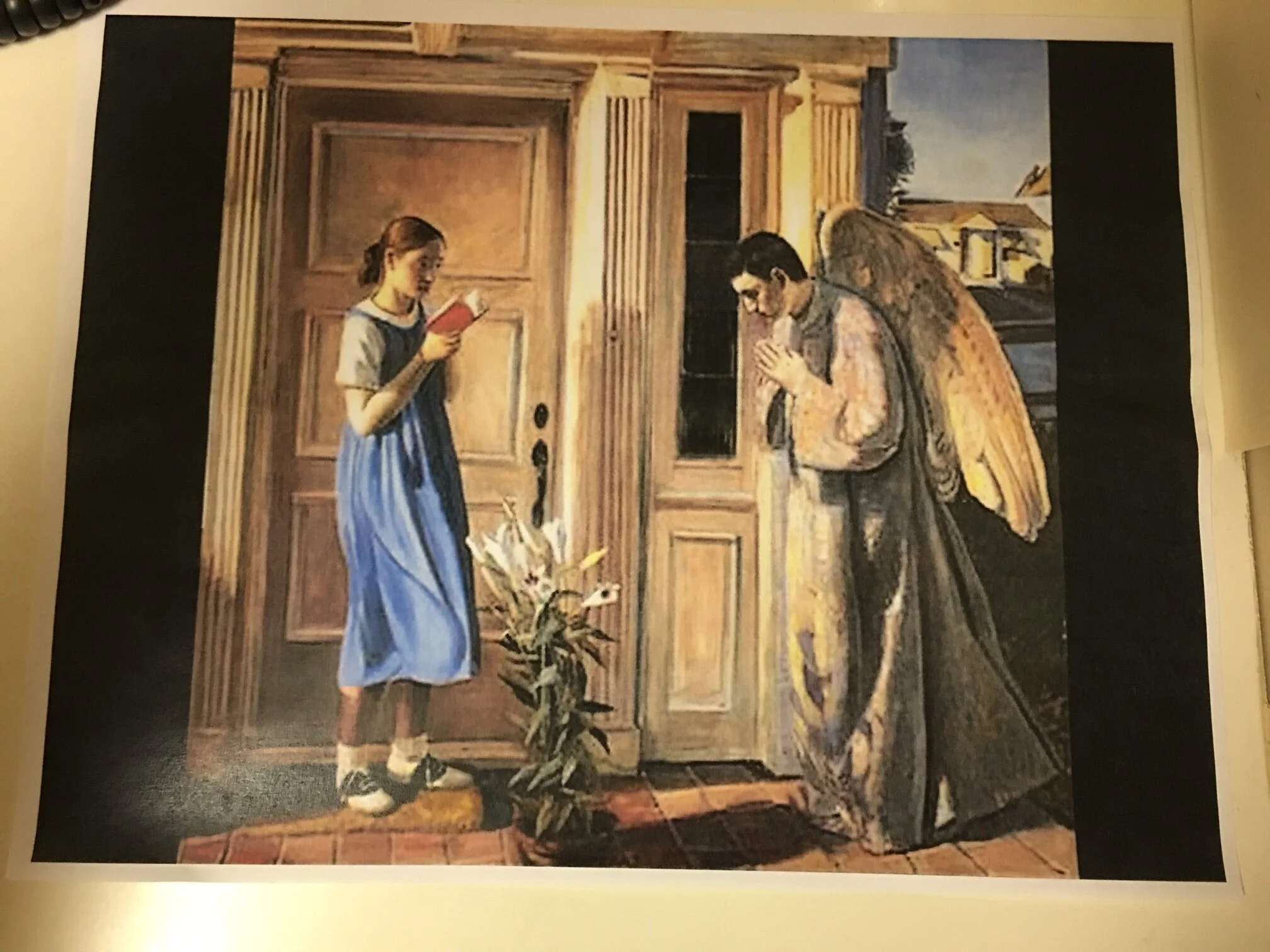“In the Episcopal order of worship, the priest sometimes introduces the Lord’s Prayer with the words, ‘Now, as our Savior Christ hath taught us, we are bold to say ... ’”
—Frederick Buechner in Whistling in the Dark (HarperSanFrancisco, 1988), pp. 83-84.
Annunciation . John Collier
Buechner is reminding us of how bold we are to say the most recited Christian prayer. Of course, it is not really just a Christian prayer, since it was written by a Jewish rabbi telling other Jews how to pray.
My experience is that whenever I visit the sick or homebound or those in need, no matter what their mental state, they say or show some awareness of the Lord’s Prayer. I have seen some, who seem unresponsive, twitch or move a hand or mouth a word or have a change in cardiac rhythm—or even begin praying when we close our visit with this prayer. Having once memorized and prayed this prayer is powerful, and could turn out to be one of the last parts of our memory to leave us.
Buechner, however, is emphasizing the prayer’s boldness. If only we could find in our lives a little of what we are praying for in this prayer, the world would be dramatically changed, “turning our lives and our wills over to the care of God,” as those in 12-step programs pray daily. This is similar to what Luke quotes Mary as saying in her response to Gabriel: “Let it be to me according to your word” (Luke 1:38).
How bold that we ask for forgiveness as we are forgiven. If we have any hope of being forgiven, we must extend the same grace.
How bold that we ask to be delivered from evil. I sometimes share that I recently was prepared to do something that my gut told me was not right, and some circumstances not of my own making kept me from it. It was an answer to prayer. God was doing for me what I could not do for myself.
When spiritual friends ask how to find God, I have suggested that they pray the Lord’s Prayer boldly, as part of a rule of life, at designated times during the day that work best for them until we meet again. I will do the same, and we can compare notes.
Joanna . joannaseibert.com





